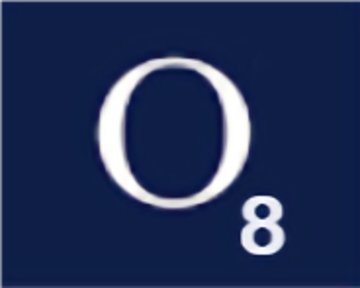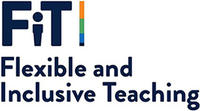Oxford University Tackles Student ‘Screen-Fatigue’ Via Holographic Lectures, Telepresence Hubs and Gamified Health App
Read Arif Wani's highly commended submission
In Hilary term 2022, students at all levels of study at Oxford were invited to enter the Imagining the Future of Digital Education writing competition.
Entrants submitted news articles telling fictitious stories of the future of digital learning at Oxford, with all submissions helping to inform the University’s new Digital Education Strategy.
Arif Wani's entry was highly commended by the judging panel. Here is his submission. You can also view all competition winners.
OXFORD UNIVERSITY TACKLES STUDENT ‘SCREEN-FATIGUE’ VIA HOLOGRAPHIC LECTURES, TELEPRESENCE HUBS AND GAMIFIED HEALTH APP
17 Sep 2025
The University of Oxford is taking a transformative step in its 929-year teaching history. Following successful trials over the summer, from next term new and returning students will enjoy holographic lectures (or ‘hololectures’) delivered by staff and alumni across the world via upgraded lecture theatres leveraging cutting-edge augmented-reality technology. More still, brand new ‘3D telepresence hubs’ dotted around campus will allow students to catch-up on recorded lectures and labs together in an immersive space.
These innovations come in response to student feedback surveys from recent years, in which the majority cite increased mandatory screen-time as a ‘negative’ or ‘very negative’ component of the academic year. So-called ‘screen-fatigue’ is thought to be a by-product of the university’s strategic efforts to forge more inclusive cross-university events, and also from the necessity to recruit more globally located staff and alumni for remote-teaching positions amidst the turmoil of ongoing educational budget cuts and the lasting fallout from failed Brexit negotiations.
Studies carried out by The Department of Education, coupled with research emerging from other leading universities and think-tanks, have generally advocated for a more screenless approach to virtual learning and to work towards adding a sense of physical presence to the teaching environment.
“In-person lectures and close-knit tutorials will always remain at the heart of Oxford’s teaching style,” says a professor from Merton College closely involved in the new rollout, “but these new extended reality technologies will help bolster the university’s ability to offer world-class teaching, whilst also giving students more flexibility in how they choose to study.”
The university’s new lecture theatres incorporate state-of-the-art laser holography and environmental illumination technology, produced in joint collaboration by Oxford-based start-up Hyperreality, founded by PhD students on Oxford’s DeepMind scholarship programme, and former employees at Meta, who themselves operate from across the pond at The Massachusetts Institute of Technology. With the backing of the university-partnered venture capital fund, Oxford Sciences Innovation, this breakthrough technology has become viable – the new format allows lecturers to give their talks from any number of small holographic pop-up studios and be rendered as a hologram in real-time, creating a more grounded and natural learning experience for students.
The technology itself is far-improved from earlier forms holographic technologies, which themselves were already very impressive – memorable milestones include the first live holographic lecture given at Imperial College London in 2019, and most notably the pseudo-hologram of long-deceased rap icon Tupac Shakur at the Coachella Valley Festival in 2012.
During the summer, the university hosted a live ‘hololecture’ for students enrolled on the UNIQ+ research programme – the talk was given by none other than Nobel Chemistry Prize Recipient Dr Jennifer Doudna. Speaking from her ‘holopoint’ at Harvard University, but rendered full-bodied in the L1 theatre of Oxford’s Mathematical Institute, she spoke of her journey with Dr Emmanuelle Charpentier in their discovery of CRISPR/Cas9 and its many ground-breaking applications.
The university’s further investment in several ‘telepresence rooms’ on campus is also a game-changer – these scaled-down microcosmic spaces (which are bookable by up to 4 students at a time) offer a superimposed immersive physical environment in which students may replay lectures or lab demonstrations captured by newly installed 3D cameras. They serve as a more fluid alternative to lecture capture, recreating the lecture experience without the constraints.
“I got to trial it over the summer with a friend, and I loved the fact that we were able to chat openly about the lecture as it was happening without worrying about disturbing anyone! I reckon I’ll be using it a lot next year during my physiology lectures in particular,” says Annabel (St Hilda’s College).
Unlike holographic lectures, these rooms do currently require the use of 3D glasses (which are provided) in the space, but it is thought that these too will be phased out once the technology allows for a more seamless 3D effect at close-range. Overall, these technological developments allow for a long-awaited screen-free dimension to learning, plus heightened usability of resources for students, so we might say the augmented reality scene at Oxford is ‘getting real’.
Even so, there are parallel issues that persist. Some students have questioned how widely such technology may be used during their degrees, and wonder about the increasingly blurred lines between their physical and mental space.
“I think there’s a culture of hyperachievement here that might be exacerbated through tech…I’m forever poring over lectures or overwriting my essays,” says Zach (New College).
One student sought to counteract not just ‘screen-fatigue’ but ‘tech-enabled-metaverse-fatigue’ altogether via a prototype well-being app. This was further developed in collaboration with the university and is now available to download.

Oxygenate (logo pictured) provides a gamified system that rewards points (“bubbles”) for healthy behaviours, from daily step-tracking and instructed breathing exercises, to attendance of virtual meditation and yoga classes (offered by partner Calm) and through participation in university-wide sporting and well-being events scheduled during term-time.
“The name is inspired by Joseph Priestley, an alumnus of my college who discovered oxygen,” says the founder, a student at Harris Manchester College. “AR and VR tech has prioritised realism over reality at every turn…whilst of course we should use them to aid our learning, we also need to stay grounded and look after our physical health. O8 encourages students and staff to give themselves time to breathe.”
Long-standing research highlights several factors that synergistically improve educational performance via elevated retention, improved focus, general happiness and more – ‘exercise’, ‘mindfulness’, ‘diet’ and ‘social contact’ are just 4 of the 8 pillars of the app. It’s gamified nature is designed to appeal to the productive Oxford student mindset – earned “bubbles” can be redeemed at JCRs and partner stores, and all statistics are entirely anonymised to dissuade competition.
“It’s a fine line, but I think it works,’ says Suraya (Mansfield College) ‘it’s casually motivating, and it saves me a few quid.”
While teething issues are being ironed out, the tenets of the app do complement the university-wide initiative of trading 2D screens for 3D environments. So, ‘hololectures’ and ‘telepresence hubs’ whilst encouraging physical well-being – it all seems a step in the right direction, but only time will tell how this new educational dimension plays out for Oxonians.

Contact us
If you have a query, please contact us at
Stay informed


